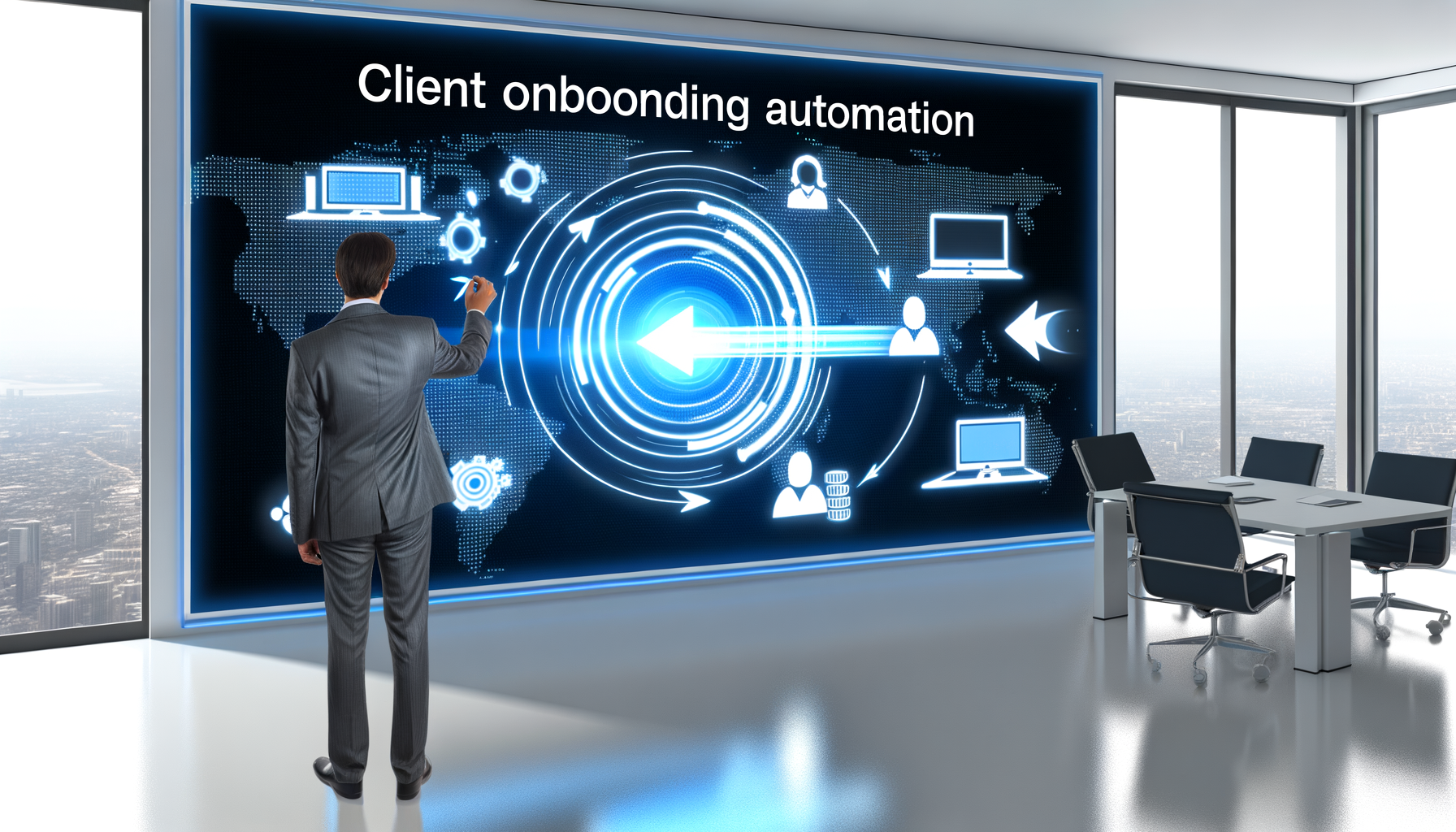In today’s fast-paced business environment, efficiency is paramount. One area where companies can significantly improve their operational efficiency is client onboarding. Automating the client onboarding process not only saves time and resources but also enhances the overall client experience. This comprehensive guide delves into the intricacies of client onboarding automation, providing valuable insights and practical tips to help businesses streamline their processes.
Table of Contents
- Introduction
- Understanding Client Onboarding
- Benefits of Automation in Client Onboarding
- Key Components of Automated Onboarding
- Choosing the Right Tools for Automation
- Implementation Strategies for Successful Automation
- Case Studies and Real-world Examples
- Common Challenges and Solutions in Automation
- Future Trends in Client Onboarding Automation
- Conclusion
Introduction
Client onboarding is a critical phase in establishing a successful business relationship. It sets the tone for future interactions and can significantly impact client satisfaction and retention rates. Traditionally, onboarding has been a manual, time-consuming process involving numerous steps such as data collection, verification, documentation, and communication. However, with advancements in technology, businesses now have the opportunity to automate these processes, leading to increased efficiency and improved client experiences.
Understanding Client Onboarding
Client onboarding refers to the process through which new clients are introduced to a company’s products or services. This process typically involves several stages:
– **Initial Contact**: The first interaction between the company and the potential client.
– **Data Collection**: Gathering necessary information from the client.
– **Verification**: Ensuring that all provided information is accurate.
– **Documentation**: Preparing contracts or agreements.
– **Training/Orientation**: Educating clients about how to use the product or service.
– **Follow-up**: Checking in with clients to address any issues or concerns.
Each of these stages requires careful attention to detail and effective communication. When done manually, this can be labor-intensive and prone to errors.
Benefits of Automation in Client Onboarding
Automating the client onboarding process offers numerous benefits:
1. **Time Savings**:
– Reduces manual data entry tasks.
– Speeds up verification processes through automated checks.
2. **Cost Efficiency**:
– Lowers operational costs by reducing labor requirements.
– Minimizes errors that could lead to costly rectifications.
3. **Consistency**:
– Ensures uniformity in how each client is onboarded.
– Reduces variability caused by human error.
4. **Improved Client Experience**:
– Provides faster responses and resolutions.
– Enhances communication through automated updates.
5. **Scalability**:
– Easily handles an increasing number of clients without additional resources.
6. **Compliance**:
– Ensures adherence to regulatory requirements through automated checks.
For more detailed insights on these benefits, you can visit [Harvard Business Review](https://hbr.org).
Key Components of Automated Onboarding
To successfully automate your client onboarding process, consider integrating these key components:
1. **Customer Relationship Management (CRM) Systems**
– Centralizes all customer data for easy access and management.
– Facilitates seamless communication between different departments.
2. **Automated Data Collection Tools**
– Uses online forms or portals for clients to submit their information directly.
– Integrates with CRM systems for real-time data updates.
3. **Verification Software**
– Automatically verifies submitted information against databases or third-party services.
– Flags discrepancies for further review if needed.
4. **Electronic Signature Platforms**
– Allows clients to sign documents digitally, speeding up agreement finalization.
5. **Automated Communication Systems**
– Sends automated emails or messages at various stages of the onboarding process.
For example tools like [Mailchimp](https://mailchimp.com) offer robust solutions for email automation.
6. **Learning Management Systems (LMS)**
– Provides training materials and resources online for easy access by new clients.
Interactive HTML Table Example:
Below is an interactive table comparing different tools used in automating various aspects of client onboarding:
| Tool Name | Functionality | Pros | Cons | Price Range (Monthly) | Website Link |
|---|---|---|---|---|---|
| HubSpot CRM | Customer Relationship Management | – User-friendly interface – Comprehensive features – Free tier available | – Can be expensive at higher tiers – Limited customization options | $0-$1200+ | |
| PandaDoc | E-signature & Document Management | – Easy document creation – Integration with other tools – Secure e-signatures | – Learning curve for advanced features – Limited free version functionality | $19-$99+ | td > |
| Mailchimp < / td > < td > Email Marketing & Communication < / td > < td >
|


